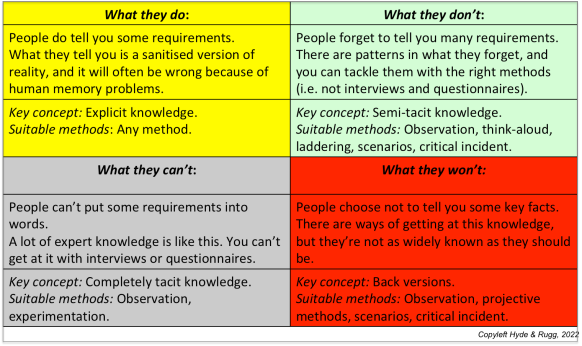By Gordon Rugg
In a previous article, we looked at what happens when you take two concepts that are normally viewed as opposites, and instead treat them as two separate concepts. We used the example of what happens when you treat liking and disliking as two separate concepts, and ask people to rate items in relation to both liking and disliking.
The result is that people are willing and able to do so. The image below shows types of response that we’ve seen in real data.

Item A has been rated low both for liking and for disliking; it’s just boring, with little to be said for or against it.
Item B has been rated high both for liking and for disliking; it produces strong but ambivalent feelings. An example that we saw involved university departmental websites, where some were strongly liked because they signalled high quality, but simultaneously strongly disliked because that same signal of high quality was viewed as implying unforgivingly high expectations.
Item C has been rated high like/low dislike by some participants, and low like/high dislike by others. This is informally known in the UK as the Marmite effect, where people either love something or hate it, with few people in between.
This approach of uncoupling apparent opposites is well established in some fields, but isn’t yet widely known outside them. We’ve been using it for a while in software evaluation, where it’s invaluable for improving software mockups before committing to the final design. We’ve also blogged about ways of using it to represent expressive and instrumental behaviour; handedness; and gender roles, going back to the literature where we first encountered it, in Bem’s work on androgyny (Bem, 1974).
The advantages of using this approach are clear when you see examples. In the next section, we’ll look at the background theory on which it works. We’ll then apply it to an apparently paradoxical finding about facial attractiveness, to show how the underlying issues can be swiftly and easily teased apart via this representation.
Continue reading →






